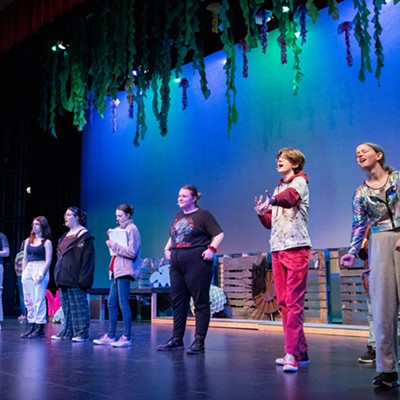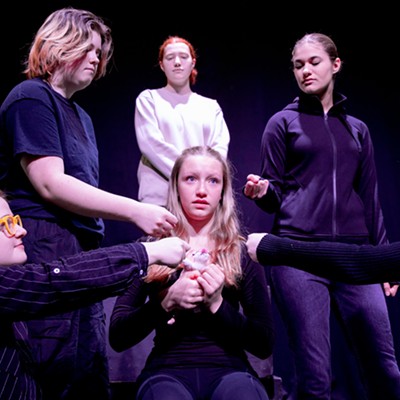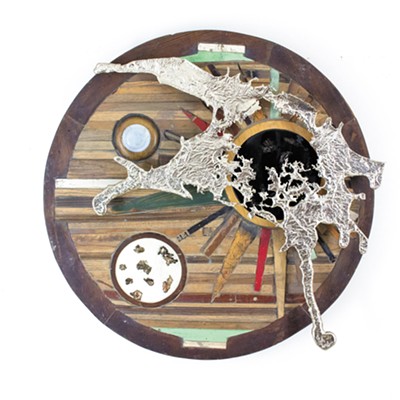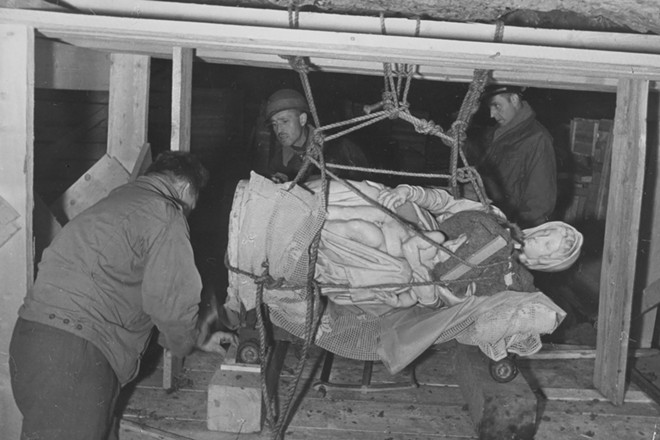
The loss of human life may be the most visceral casualty of war, but it's not the only one. When things we value are damaged — places of learning or worship, family heirlooms — the aftermath is long lasting and insidious. We lose heart, especially if the damage is tied to who we are or our heritage so often expressed through art or architecture.
We do not need to be in the battle zone to recognize this loss; indeed, our ability to overcome — and to help others enduring it elsewhere — is a hallmark of humanity at its finest. But who would be willing to be the bulwark against threats to paintings, rare books or sacred buildings?
The answer: the Monuments Men and Women, formally known as the Monuments, Fine Arts, and Archives program, created by the U.S. Army Civil Affairs division in 1943. And Tyler Douglass Lowe, a Post Falls native who recently joined the Army's modern-day version of the Monuments Men.
"This is my chance to get hands-on with [cultural preservation] and actually make a difference," said Lowe in 2019, when he was first notified of his acceptance into the program. The Inlander interviewed Lowe again in 2021 and 2022, when Lowe's official confirmation finally came through.
The original Monuments program included 400 mostly military members with expertise in art, architecture, history and related fields who were tasked with securing culturally significant items during World War II. This intrepid force protected and later recovered an estimated 5 million artworks, religious texts and other items, mostly stolen by the Nazis from predominantly Jewish citizens and organizations across Europe.
Although disbanded after World War II, the Monuments program has been reanimated in the last decade and recently gained momentum.
Since 2015, the Army (specifically its Civil Affairs & Psychological Operations Command-Airborne division) has been collaborating with the Smithsonian Institution to recruit people willing to dedicate eight years — potentially risking their lives — to saving art, architecture and related items imperiled by war. Given the current worldwide conflicts, that's not just a big ask — it's monumental.
The 30-year-old Lowe, who goes by both T. Douglass and Tyler, is up to the task. Both his pre- and post-collegiate life has been steeped in art, architecture and entrepreneurship.
In college, Lowe studied the medieval and Renaissance eras and Hellenistic Greek language, earning master's degrees in antiquities and ancient cultures.
Lowe was invited to interview for the Army's cultural heritage preservation program in late fall 2019 and preliminarily accepted. The plan: Lowe would receive training, be formally commissioned, given a gun and sent overseas, which could be anywhere experiencing conflict.
In November 2019, Inlander interviewed Lowe, preparing for what he thought was a rapid deployment.
"There were a lot of problems faced in the European theater that could have been mitigated with better communication," Lowe said at the time, "so a lot of what I'm doing now is reading about those issues while trying to think of better solutions in the 21st century."
Lowe was also hitting the gym, he said, with the enthusiasm of his youthful days as an Eagle Scout.
"All descriptions point to this being a physically demanding role in sometimes really stressful environments," Lowe said. "We kind of joke about it, but we are having to prepare ourselves to be nerdy Rambos."
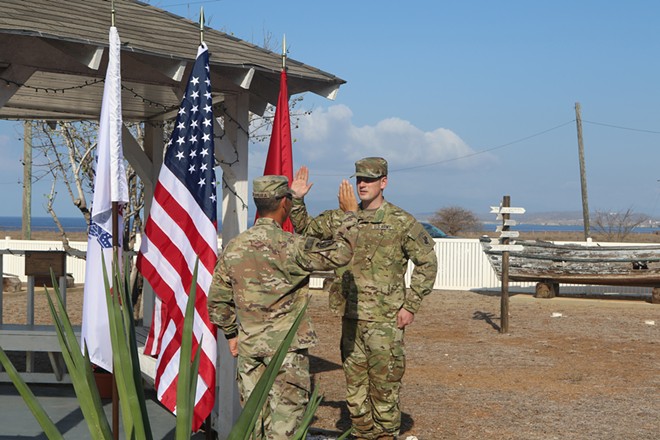
COVID-19 put Lowe's plans on hold until 2021.
By November 2021, Lowe had completed initial training. Last fall the Inlander spoke with U.S. Army Reserve Maj. Dale Kooyenga, who leads recruiting efforts for the program and also spent time overseas doing cultural preservation work. He said Lowe was a good fit.
"We're looking at people that can operate at a strategic level and do analysis at a very high level and speak the language... of the profession," Kooyenga said.
Although Kooyenga could not provide specifics — the size of the program, its participants, regional deployment — he was authorized to speak generally about what Lowe might be doing as a cultural preservation specialist.
"He may be doing assessments as far as what is going on around the world, as far as some of the nations and great power competitions, and what they're doing to suppress minorities through their cultural heritage," Kooyenga said, noting that Lowe may also be part of rebuilding goodwill.
The Army's Civil Affairs division is about healing communities, Kooyenga added. "And cultural artifacts and art are a big part of healing communities."
U.S. support for cultural preservation is a mixed bag. After World War II, the U.S. signed the 1954 document in which member states agreed not to destroy religious sites or historically significant artifacts, including "as a means of intimidating people under occupation or as a reprisal." But the U.S. didn't actually ratify the convention's doctrine until 2009, finally committing to the second part of the agreement: incorporating cultural preservation and protection into military actions.
By 2014 and 2015, when civil wars raged in places like Syria, where the Islamic State obliterated ancient cultural sites, if the U.S. military got involved, it would be compelled to address cultural preservation, too.
"There's no doubt enemies want to kill, but they also want to kill cultural heritage and signs that those people ever existed in the first place," Kooyenga noted.
Awareness of cultural preservation got a Hollywood boost not long ago. In 2014, The Monuments Men movie revived the narrative for modern audiences, while the 2015 film Woman in Gold depicted a descendant of Adele Bloch-Bauer fighting for and winning the return of Gustav Klimt's painting by the same name, a work valued at $135 million.
That points to a secondary function of the Monuments program: economics. The sale of ill-gotten items can be used to fund terrorism on the black market.
At the end of the day, however, cultural preservation is not about artifacts, Lowe said. It's about people. His mission was "preserving the past for the sake of the present."
And on March 17, 2022, nearly three years after his acceptance to the program, this former scout whose oath was "to help other people at all times" finally got some monumental news. Lowe would be — officially, finally — an Army Reserves cultural heritage preservation officer.
Speaking by phone as he and his wife (pregnant at the time with the couple's third child) were busy moving into a new home and preparing for his imminent departure, he did not know exactly what the future held. But as for stepping into the legacy of the Monuments Men and Women, Lowe was ecstatic.
"I can't wait," he said. ♦








